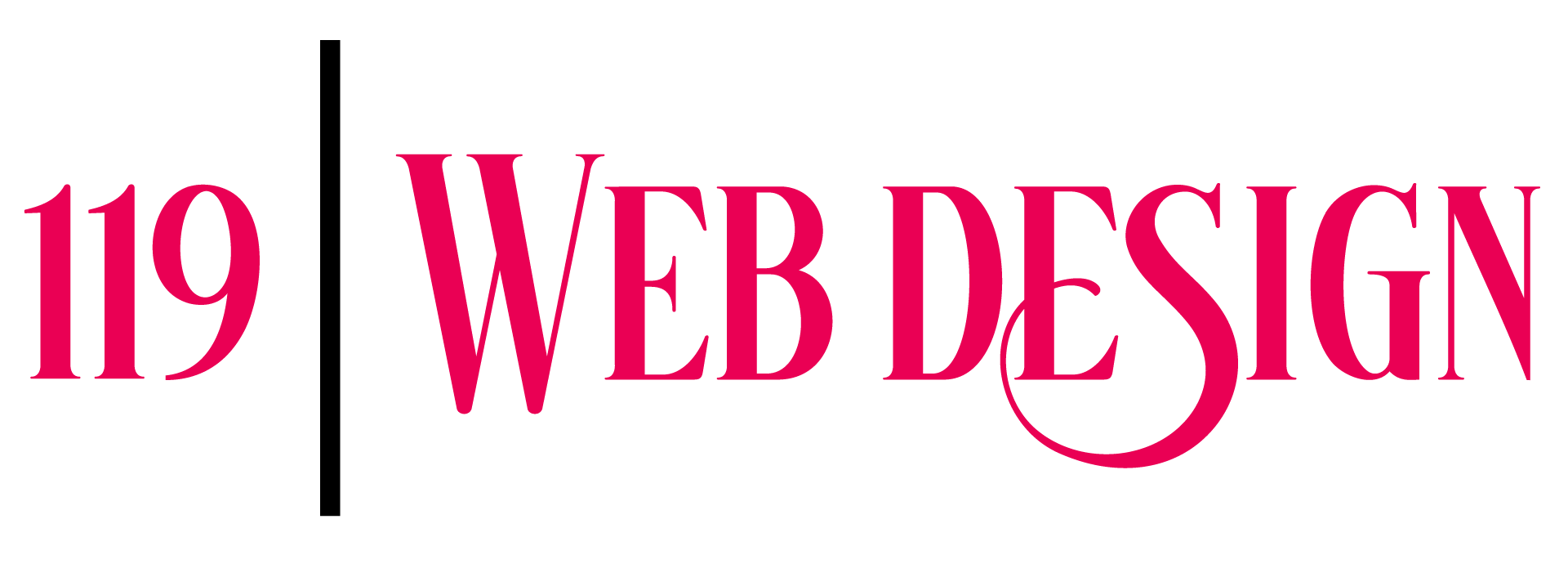Building a successful website is more than just throwing together a few pages—it’s about creating a cohesive, user-friendly experience that resonates with your audience. For beginners, mastering the fundamentals of web design is crucial to making a strong first impression and driving engagement. Whether you’re designing a personal portfolio, an online store, or a professional blog, understanding the core principles of web design ensures your site stands out. This guide dives into the essential concepts, frameworks, and practices that every aspiring designer needs to know, from the basics of layout and color theory to advanced strategies for usability and conversion optimization. By following these principles, you’ll not only create a visually appealing site but also one that functions seamlessly for both you and your visitors. Let’s explore the key principles, frameworks, and best practices that will elevate your website design skills to the next level.
Key Takeaways
- Strategic color choices enhance visual appeal and brand identity, ensuring readability and engagement.
- High-quality, relevant content is essential for informing, entertaining, and converting visitors, while also boosting SEO performance.
- Consistency in design elements fosters trust and seamless navigation, aligning with brand identity.
- Creativity sets websites apart, captivates audiences, and drives innovation for a dynamic online presence.
- Contrast creates visual interest, making elements stand out and ensuring ease of distinction.
- Repetition establishes cohesion and brand recognition through consistent design elements.
- Alignment balances and organizes elements, enhancing readability and user experience.
- Proximity reduces clutter and improves usability by grouping related elements.
- Headers facilitate easy navigation and reinforce branding at the top of the page.
- Footers provide essential information like contact details and legal notices, enhancing user trust.
- Sidebars offer supplementary navigation or featured content, complementing the main content area.
- Main content areas display primary content effectively, ensuring a focused and engaging user experience.

Basic Principles of Web Design
Web design encompasses various principles aimed at creating effective, user-friendly, and visually appealing websites. Below are the core principles that guide web design:
- Usability
- Navigation : Clear and intuitive navigation helps users find information easily.
- Information Architecture : Organizing content logically to enhance user understanding.
- User Testing : Conducting tests to identify issues and improve user experience.
- Accessibility : Designing websites usable by people with disabilities, including screen readers and keyboard navigation.
- Visual Appeal
- Balance : Creating a harmonious layout that avoids clutter and eye strain.
- Consistency : Maintaining uniformity in design elements like fonts, colors, and spacing.
- Modern Aesthetics : Incorporating contemporary design trends and clean layouts.
- Responsiveness
- Mobile-First Design : Optimizing for mobile devices before desktop, as mobile usage dominates web traffic.
- Flexible Layouts : Using CSS Grid and Flexbox to ensure designs adapt to different screen sizes.
- Content Management
- Content Strategy : Structuring content to meet user needs and search engine expectations.
- Dynamic Content : Using tools like CMS (Content Management Systems) to update and manage content efficiently.
- Accessibility
- Perceivable : Ensuring content is accessible via text, images, and other media formats.
- Operable : Navigating the website should be easy and intuitive for all users.
- Cognitive Load : Reducing mental load by simplifying interfaces and avoiding unnecessary complexity.
- SEO Optimization
- Meta Tags : Using descriptive titles and meta descriptions for better click-through rates.
- Alt Text : Adding alt attributes to images for better accessibility and SEO.
- Site Speed : Optimizing images and code to ensure fast loading times.
- User Experience (UX)
- Intuitive Interaction : Designing interfaces that feel natural and easy to use.
- Feedback Mechanisms : Providing visual cues to indicate interactions, like hover effects and button clicks.
- Personalization : Tailoring content and design based on user preferences and behavior.
By focusing on these principles, web designers create websites that are not only functional but also enjoyable and easy to navigate. Following best practices ensures that your website stands out and meets the needs of your audience effectively.
What are the 7 principles of design?
The 7 principles of design are essential guidelines that help create visually appealing, functional, and user-friendly interfaces. These principles are often used in web design, graphic design, and UI/UX design to ensure harmony, usability, and aesthetics in the work.
Here’s a breakdown of each principle along with practical applications:
- Emphasis
- Emphasis is about drawing attention to the most important elements in a design. This can be achieved through:
-
- Typography: Using bold fonts, larger text, or capitalization to highlight key words or phrases.
- Color: Using contrasting colors or high-contrast elements to make certain objects stand out.
- Placement: Positioning elements in a way that naturally draws the eye to the most critical parts of the design.
- Example: In logo design, emphasis is often used to make the brand name or symbol stand out from the rest of the design elements.
-
Balance and Alignment
- Balance ensures that the design feels stable and harmonious, while alignment refers to the arrangement of elements in a consistent manner. This can be achieved through:
-
- Symmetrical Designs: Elements are mirrored around a central axis, creating a balanced look.
- Asymmetrical Designs: Elements are arranged in an uneven fashion but still maintain balance through other principles like contrast or repetition.
- Grids and Guides: Using grids to align text and images consistently.
- Example: A poster design might use symmetry to create a balanced composition, while a webpage might use grids to align navigation menus and content.
-
Contrast
- Contrast is the difference between light and dark tones, which helps create visual interest and enhances readability. High contrast can make designs more dynamic, while low contrast creates a more subtle and elegant look. This principle is particularly useful in:
-
- Logo Design: Ensuring the logo stands out against its background.
- Web Design: Improving readability of text and buttons.
- Photography: Enhancing the visual impact of subjects by adjusting lighting and shadows.
- Example: A website might use high contrast colors for its header and footer to make them stand out, while using low contrast for background elements to keep the interface clean.
-
Repetition
- Repetition is the consistent use of the same elements or patterns to create unity and brand recognition. This principle is crucial in:
-
- Brand Identity: Consistently using the same colors, fonts, and layouts in all brand materials.
- Pattern Design: Repeating patterns in textiles, wallpaper, or digital backgrounds.
- UI/UX Design: Using repetitive elements like buttons or icons to create a cohesive user experience.
- Example: A company might use the same color scheme and typography in all its marketing materials to reinforce brand identity.
-
Proportion
- Proportion relates to the size and scale of elements in relation to each other. Proper proportion creates a sense of order and harmony, while improper proportions can make designs feel awkward or unbalanced. This principle is applied in:
-
- Fine Art: Creating paintings or illustrations where figures and landscapes appear in proportionate scale.
- Architecture: Ensuring that different structural elements (like columns, walls, and windows) are proportional to each other.
- Digital Design: Scaling UI elements appropriately for different screen sizes and resolutions.
- Example: In web design, responsive design relies heavily on proportion to ensure elements look good on all devices.
-
Movement
- Movement adds dynamism and energy to a design. It can be subtle, like the tilt of a font, or more dramatic, like an animated logo. Movement is commonly used in:
-
- Logo Design: Animated logos that grab attention while loading.
- Web Design: Micro-interactions like hover effects on buttons or cards.
- Video Editing: Adding motion graphics or transitions to make videos more engaging.
- Example: A website might use subtle animations on scroll to create a smooth user experience.
-
White Space
- White space, or negative space, refers to the empty areas left in a design. Proper use of white space improves readability, reduces clutter, and gives the eye room to breathe. Effective use of white space is crucial in:
-
- Print Design: Magazines and posters where too much text would overwhelm the reader.
- Web Design: Websites with excessive content might use white space to organize information and make it easier to navigate.
- Typography: Ensuring text is readable by leaving enough space between letters and words.
- Example: A clean, minimalist website might use large amounts of white space to make its content stand out.
By applying these principles thoughtfully, designers can create more effective, aesthetically pleasing, and user-friendly designs across various platforms and mediums.

The 7Cs of Website Design
The 7Cs of website design are essential principles that guide the creation of effective and user-friendly websites. By focusing on these seven key areas, businesses can ensure their websites not only attract visitors but also convert them into loyal customers.
- Creativity :
- Inject innovation into your design to stand out from competitors.
- Use unique colors, typography, and layouts that reflect your brand identity.
- Brainstorm ideas and explore unconventional solutions to solve user problems.
- Consistency :
- Maintain a uniform look and feel across all pages of your site.
- Consistently apply your brand colors, fonts, and imagery.
- Ensure your logo, navigation, and other elements remain recognizable.
- Clarity :
- Make your content easy to read and understand.
- Use clear typography and proper spacing to avoid clutter.
- Craft a strong value proposition that immediately communicates your site’s purpose.
- Content :
- Focus on creating high-quality, relevant, and engaging content.
- Use SEO best practices to optimize your content for search engines.
- Regularly update your content to keep it fresh and useful.
- Continuity :
- Ensure seamless navigation between pages and smooth scrolling.
- Create a cohesive user journey that guides visitors toward conversions.
- Maintain consistency in your messaging and design elements.
- Compatibility :
- Optimize your website for all devices, including desktops, tablets, and mobile phones.
- Use responsive web design techniques to adapt to different screen sizes.
- Test your site across various browsers and devices to ensure compatibility.
- Customization :
- Tailor your design to meet the specific needs of your target audience.
- Use analytics tools like Google Analytics to gather insights about your visitors.
- Continuously refine your design based on feedback and performance data.
By mastering these 7Cs, businesses can create websites that are not only visually appealing but also highly functional and capable of driving success.

What Are the 4 C’s of Website Design?
The 4 C’s of website design are critical components that contribute to the success and effectiveness of a website. These elements work together to create a cohesive, user-friendly, and visually appealing online presence. Below is a breakdown of each component:
- Color :
- Color plays a vital role in shaping the overall aesthetic and branding of a website. Strategic color choices can evoke emotions, convey messages, and enhance usability. Proper contrast and color schemes ensure readability and visual appeal, making the site more engaging for visitors.
- Content :
- High-quality, relevant, and engaging content is the backbone of any effective website. It serves to inform, entertain, and convert visitors into customers or loyal followers. Compelling content also improves SEO performance, helping the site rank higher in search engine results.
- Consistency :
- Consistency ensures that all elements of the website align with its brand identity. This includes design patterns, typography, color schemes, and layout. Consistent messaging builds trust and helps users navigate the site seamlessly, fostering a positive user experience.
- Creativity :
- Creativity is what sets a website apart from its competitors. A unique design approach, innovative layouts, and original content ideas can captivate audiences and leave a lasting impression. Creativity also drives innovation, keeping the website dynamic and forward-thinking.
By focusing on these four core elements, website designers can create digital experiences that are not only functional but also visually stunning and highly effective in meeting business objectives.
What are the 4 basic design rules?
The four fundamental principles of design are:
- Contrast : Create visual interest by using contrasting colors, textures, or shapes. Proper contrast ensures elements stand out and are easily distinguishable.
- Repetition : Consistency in design elements like fonts, colors, and layouts helps establish a cohesive look. Repetition creates familiarity and aids brand recognition.
- Alignment : Elements should be aligned vertically or horizontally to create balance and readability. Poor alignment can disrupt the viewer’s experience.
- Proximity : Group related elements together spatially to reduce clutter and improve usability. Proximity organizes information logically, making it easier to digest.
These principles guide the creation of visually appealing, functional, and consistent designs across various mediums.

What Are the 4 Main Parts of Any Website Layout?
- Header: The top section of a webpage typically containing navigation menus, logos, and branding elements.
- Footer: The bottom section often comprising contact information, additional navigation links, and legal notices.
- Sidebar: A vertical section on the left or right side of the page, used for supplementary navigation or featured content.
- Main Content Area: The central section where the primary content, such as articles, products, or services, is displayed.
These four components work together to create a structured and user-friendly interface, ensuring easy navigation and a pleasant browsing experience.




0 Comments